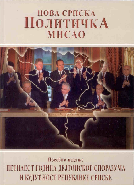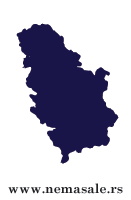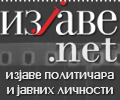| NSPM in English | |||
Moscows Leash |
 |
 |
 |
| понедељак, 23. новембар 2009. | |
|
(The National Interest, 20.11.2009)
Before the economic crisis, there were two issues on the European gas-security agenda. The first was a projected supply deficit by 2020, ranging from 5 to 20 percent of demand. The problem was not Russian gas. Even if Gazprom met its production goals, the shortfall would still exist. The second was an ability to deal with disruptions. This was mostly a problem for Eastern Europe due to its dependence on Russia and its dearth of defense mechanisms, such as gas storage, pipelines with neighbors from whom to draw gas when in need and terminals that can receive seaborne gas. These shortcomings were made plain in 2009: the Russia-Ukraine gas dispute put Eastern Europe in crisis mode, while Western Europe barely noticed. Russia, meanwhile, was reaping a windfall from the commodities boom. Gazprom hoped to increase its market share in Europe, but it hasn’t succeeded. Exports were flat from 2000 to 2008, and although Gazprom was selling gas more to Europe (and less to the former Soviet Union), its market share was the same in 2008 as it was in the 1990s. Gazprom’s 2008 production was 8 percent below 1990, an inauspicious sign for a company who wants to supply Europe with 30 to 33 percent of its gas by 2020 (up from 28 percent in 2008). Gazprom’s ambitions were set against the decline of its existing fields in West Siberia, and the company’s progress in developing new fields was slow. The economic crisis served as a further curb on Gazprom’s ambitions. The downturn reduced European gas demand, which fell 8.7 percent in the first half of 2009 relative to 2008. Prices came down as well. At the German border, often used as a proxy for the Continent, prices in August 2009 were 47 percent below their November 2008 peak. Gazprom felt this change. Between January and October 2009, its production fell 23.4 percent, its exports dropped 31.6 percent and domestic sales were down 8.5 percent. Although the drop in demand and prices was unavoidable, Gazprom took a bigger hit than its competitors. Despite remaining Europe’s largest gas supplier, the company experienced the greatest percentage drop in exports. Algeria and the Netherlands sold 10 and 22 percent less gas to Europe, respectively in the first nine months of 2009. And Norwegian gas exports actually rose 9 percent. Seeing as the drops in Russian exports started before the January 2009 crisis with Ukraine and continued after supplies were restored, this decline cannot be blamed on that spat. Russian gas prices were higher than Norwegian or Algerian prices at the start of the year, so this could have played a role. But as prices changed, import trends did not follow, suggesting other forces at work. One possible explanation is that buyers had bargaining power with Russia. Importers bought less gas than what they were obligated by contract to purchase, which could have led to fines from Gazprom. Since European buyers had been lenient with Russia when the latter cut exports in January 2009, they might have figured it would be easier to escape penalties with Russia than with other sellers. Despite all of Gazprom’s troubles, things are improving for the company. Exports in August, September and October were up relative to last year. While demand has yet to recover, there are slivers of hope in places like Germany. The rise in oil prices (to which gas prices are linked) will boost Gazprom’s sales price, although it is still far below its 2008 peak. Meanwhile, Gazprom is postponing some of its 2009 gas deliveries to later dates, meaning that the company may still collect in advance money for gas it hasn’t yet delivered. As such, the crisis hasn’t really altered the fundamentals of the energy relationship between Europe and Russia. Moscow will still sell Europe a lot of gas. The continent’s search for new energy suppliers has been made less urgent, but if European nations want to diversify in the future, they’ll have to keep looking. For the long-term, the financial crisis has lowered demand in Europe. In its latest World Energy Outlook, the International Energy Agency (IEA) forecasted European demand in 2020 at 590 billion cubic meters (bcm), just 8 percent above 2007 levels. This is pessimistic when one considers that pre-crisis demand projections were generally around 700 bcm. Even with lower demand, however, Europe will be hardly inundated with gas. Based on the continent’s current suppliers, including gas from Russia, Europe gas supply would be about even by 2020. If demand grows faster—as is likely—it’d be in deficit. Europe faces a less-tight gas market by 2020 than it did a year ago, but that market is by no means loose. The medium-term outlook is harder to forecast. Gazprom believes that European demand will recover in two to three years. Given the growth in supply (mainly from liquefied natural gas), there is somewhat of an industry consensus that it would take four to five years before the current gas surplus is sapped away. In the meantime, the crisis makes Gazprom’s planning more difficult. Gazprom, the quintessential pro-cyclical company, needs to invest when demand is down, and that investment must coincide with the recovery in demand. This will not be easy. But in a way, the crisis bought Gazprom time. In 2008, it was on an unsustainable trajectory, and there was a real concern that it would be unable to deliver on its obligations by 2015. Such fears have dissipated. The question of timing will affect other investments intended to diversify Europe’s natural-gas supply. Although investment in Asia is continuing, an indication that companies are bullish for the post-2015 period, other infrastructure projects aren’t doing so well. There are signs that Azerbaijan, which is being courted to support the Nabucco pipeline to bring gas from the Caspian to Central Europe, may delay its export plans due to demand uncertainty. Egypt announced it was putting a new export project on hold because of weak demand, although other factors played a role in its decision. Gazprom’s balance sheet could also be affected by change in how Europe prices gas. But this is less likely. The IEA has argued that the link between oil and gas prices could be broken. (European gas prices, save for a few markets in Northwestern Europe, are indexed to oil.) But there are many other ways to cope with oversupply without giving up on oil as a marker. The rescheduling of deliveries proposed by Gazprom suggests that other steps are preferred options. Even so, abandoning oil indexation will produce a near-term drop in prices, but what happens next is another story. There is no reason to think that buyers or sellers will be consistently better off in a different pricing world. As Europe peers into the future, the gap between supply and demand is still there, except that it may have been pushed back a few years. Russia is still executing its long-term investment plan while on a tightrope. Eastern Europe is still too dependent on Russia and is making only marginal moves to enhance its energy security. This is may be more of a marathon than a hundred-meter dash. But the race continues. (Nikos Tsafos is a senior natural-gas analyst with PFC Energy) |
Од истог аутора
Остали чланци у рубрици
- Playing With Fire in Ukraine
- Kosovo as a res extra commercium and the alchemy of colonization
- The Balkans XX years after NATO aggression: the case of the Republic of Srpska – past, present and future
- Из архиве - Remarks Before the Foreign Affairs Committee of the European Parliament
- Dysfunction in the Balkans - Can the Post-Yugoslav Settlement Survive?
- Serbia’s latest would-be savior is a modernizer, a strongman - or both
- Why the Ukraine Crisis Is the West’s Fault
- The Ghosts of World War I Circle over Ukraine
- Nato's action plan in Ukraine is right out of Dr Strangelove
- Why Yanukovych Said No to Europe

.jpg)
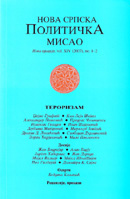
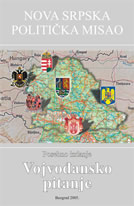
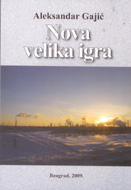
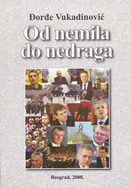
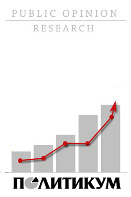



 Many analysts think that Gazprom’s “grip” on Europe has loosened. The company has been battered by the economic crisis, while the Continent is now coping with a glut of natural gas rather than scrambling for resources. But this is a cyclical crisis, not a structural one. Europe still needs gas, and Gazprom still wants to sell it. And although the times have changed, Europe’s energy challenges have not gone away.
Many analysts think that Gazprom’s “grip” on Europe has loosened. The company has been battered by the economic crisis, while the Continent is now coping with a glut of natural gas rather than scrambling for resources. But this is a cyclical crisis, not a structural one. Europe still needs gas, and Gazprom still wants to sell it. And although the times have changed, Europe’s energy challenges have not gone away.